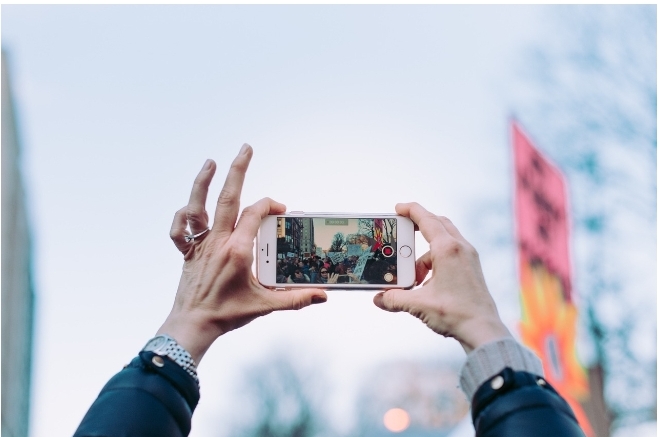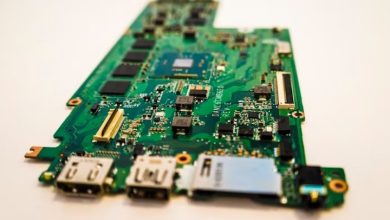What Is Pixel Binning in Mobile Photography? How Does It Work?

Modern smartphones have strong camera systems, and a lot goes on behind the scenes to make your images appear great. Pixel binning is one of these systems
You’ve probably noticed how Samsung refers to pixel binning using terminology like “nona-binning” or “Adaptive Pixel” in their marketing, claiming that it improves low-light performance. But, in fact, does it? Let us discuss pixel binning, why it is used, and how it works.
Why Smartphone Cameras Use Pixel Binning
Before you can understand what pixel binning is and how it works, you should first understand why it exists. When it comes to cameras, mobile phones face a significant challenge: size constraints. A camera sensor is essentially a plate with millions of pixels that catch light from the environment. As a result, the more pixels there are, the more light they can catch and use to create a better image.Here’s the issue: if we keep increasing pixels, we’ll have to keep expanding the sensor bigger to accommodate them. This is challenging since a phone’s camera module is only one portion of its body; you also need to fit the battery, motherboard, speaker, and a slew of sensors.
To get past this barrier, tech companies devised a smart workaround. Instead of making the sensor ridiculously large, they shrunk the pixels themselves, allowing more pixels to fit in a given space and increasing the maximum theoretical image resolution.
For instance, the 12MP sensor on the iPhone 13 has a pixel size of 1.9 m (micrometer), and the 48MP sensor in the iPhone 14 Pro has a pixel size of 1.22 m. And the 108MP sensor in the Galaxy S22 Ultra boasts pixels as small as 0.8 m, making it one of the smallest we’ve seen.
What is Pixel Binning?
Pixel binning is a mobile photography technique designed to improve the image quality acquired by smartphone cameras, particularly in low-light circumstances. Pixel binning is the process of merging data from numerous nearby pixels into one bigger “superpixel.” This method improves overall image quality by eliminating noise, enhancing dynamic range, and sharpening.
What Is Pixel Binning in Mobile Photography? How Does It Work?
Pixels are the basic elements of digital imagery. Each pixel is a tiny square of color information that, when joined with other pixels, makes an image. The size of these pixels is critical in influencing the amount of detail and image quality obtained by a camera sensor.
Pixel binning works by combining nearby pixels to form a larger pixel. In a 2×2 pixel binning approach, for example, four nearby pixels are combined into a single superpixel. The values of these four pixels, such as color and brightness, are averaged or merged to produce the superpixel’s final value. This bigger pixel can capture more light and provide higher-quality images, especially in low-light situations.
Read Also: What Is a Reverse Proxy and How Does It Work?
Why Pixel Binning is important?
One of the key advantages of pixel binning is that it improves low-light performance. The resulting superpixel catches more light, reduces noise, and produces a cleaner image by integrating data from numerous pixels. This is especially useful in situations where the available light is limited, such as at night or inside.
Pixel binning improves image dynamic range while also improving low-light performance. The dynamic range of a camera sensor relates to the range of brightness levels captured. The resulting superpixel can capture a larger range of brightness values, keeping more details in the image’s shadows and highlights by merging pixels.
Pixel binning also improves the image’s overall sharpness and detail. The resulting superpixel catches finer details and eliminates some of the image artifacts, resulting in clearer and more defined images.
It is important to remember, however, that pixel binning has limitations. One of the most significant disadvantages is the loss of resolution. Because many pixels are merged into a single superpixel, the resulting image has a lower resolution than the camera sensor’s natural resolution. This resolution loss may not be obvious in regular-sized prints or while viewing images on mobile devices, but it may become more noticeable when zooming in or printing larger-sized photos.
Another limitation is that small details are lost. While pixel binning increases overall image quality, the merging of pixels might result in a loss of tiny details. This is especially obvious when photographing complicated textures or patterns that necessitate fine detail. This trade-off must be considered when determining whether to allow pixel binning or take photographs at the camera sensor’s native resolution.
Furthermore, pixel binning introduces some image artifacts and can pose challenges for image processing algorithms. As the process involves combining and averaging pixel values, certain artifacts such as color inaccuracies or moiré patterns may appear in the final image. Camera manufacturers and software developers continuously work on refining their algorithms to minimize these artifacts and deliver more accurate and pleasing images.
Various pixel binning algorithms are used by different smartphone manufacturers. 2×2 pixel binning and 4×4 pixel binning are the most prevalent approaches. Four neighboring pixels are integrated into one superpixel in 2×2 pixel binning, whereas sixteen nearby pixels are merged in 4×4 pixel binning. The pixel binning technique used is determined by the camera sensor, image processing capabilities, and desired balance of image quality and resolution.
Some smartphone cameras also incorporate variable pixel binning, where the binning process can be adjusted dynamically based on the lighting conditions or user preferences. This flexibility allows for optimized image quality in different scenarios, ensuring that users can capture the best possible images in both well-lit and low-light situations.
Pixel binning has revolutionized mobile photography, enabling smartphone cameras to produce impressive results even in challenging lighting conditions. Leading smartphone manufacturers, such as Apple, Samsung, and Google, have integrated pixel binning technology into their camera systems, offering users the ability to capture stunning images without the need for additional equipment or complex manual settings.
There are a few things to consider when using pixel binning in smartphone photography. Firstly, it is important to understand the limitations of your smartphone camera and its pixel binning capabilities. This knowledge enables you to make accurate choices when photographing and controlling image quality and resolution expectations.
Additionally, optimizing lighting conditions can significantly enhance the results. Pixel binning performs best in low-light situations, so utilizing techniques such as natural or artificial lighting, reducing camera shake, and avoiding harsh shadows can help maximize the benefits of this technology.
Lastly, taking advantage of manual controls and camera settings can further improve the image quality. Some smartphones provide manual control options for adjusting parameters like ISO, shutter speed, and white balance. Experimenting with these settings can help fine-tune the pixel binning process and achieve the desired results.
Looking ahead, the future of pixel binning in mobile photography is promising. Sensor technology continues to evolve, with the development of larger pixels, improved image processing algorithms, and hybrid pixel binning techniques that combine the advantages of pixel binning with other innovative approaches.
Moreover, the integration of artificial intelligence and computational photography further enhances the capabilities of pixel binning. These advancements enable smartphones to capture and process images with increased accuracy, reduced noise, and improved dynamic range, even in challenging shooting conditions.
Pixel Binning Does Not Guarantee Better Photos
Here’s something you might find difficult to accept: pixel binning is a solution to a fake problem. Pixel binning enables for more but smaller pixels to be placed on a camera sensor rather than fewer but larger pixels. This is unnecessary since a larger individual pixel captures more raw light.
In comparison, a superpixel of the same size holding the photonic data of numerous smaller pixels must predict what the end image should look like—and it’s not always successful. This is why images taken with Samsung phones appear over-processed at times, whereas photos taken with iPhones appear more natural and consistent.
Because tech companies love boasting about how many megapixels their latest camera sensor has, every regular smartphone user has come to believe that a greater megapixel count equates to better image quality. No, it does not. The size of the sensor, rather than the number of pixels on it, determines image quality.
The highest possible image resolution that your phone is capable of shooting in is determined by the amount of megapixels. The sole practical advantage is that you can zoom and crop into your photographs without them blurring. Megapixel count has nothing to do with color science, white balance, dynamic range, or anything else.
The supposed benefits of pixel binning are the result of advanced image processing algorithms and the processor in your phone, not the technology itself. The latter is responsible for making your images look brighter, less grainy, and more colorful.
Because applying image algorithms to a larger photo requires more processing power, a pixel-binned lower resolution photo might occasionally look better than a full resolution shot. A smaller image can be processed right away.
Read Also: Chroma Subsampling: What Is It and Why Does It Matter?
Conclusion
The main goal of pixel binning is to increase the maximum theoretical image resolution that a smartphone camera can capture while reducing it enough that your phone is able to process your photos rapidly for everyday use.
Image resolution is important since you want to be able to zoom into your photos without losing information, but figures like 108MP are simply unneeded.
Simply looking at camera samples and watching reviews is the greatest approach to ensure that the phone you want to buy has a solid camera system. Don’t get too caught up in the details; if you like what you see, that’s the correct camera for you.
FAQs
Can I disable pixel binning on my smartphone camera?
It depends on the specific smartphone model and camera app. Some devices offer manual control options that allow you to adjust pixel binning settings or disable it altogether.
Does pixel binning impact the performance of the camera?
Pixel binning does require additional processing power, but modern smartphones are designed to handle it efficiently without significant impact on camera performance.
Are there any software-based alternatives to pixel binning?
Yes, software-based solutions like computational photography techniques can help improve image quality without the need for physical pixel binning.
Can I achieve similar results as pixel binning with post-processing software?
Post-processing software can enhance certain aspects of an image, such as reducing noise or improving dynamic range, but it cannot fully replicate the benefits of pixel binning, which relies on capturing data directly from the camera sensor.
Can pixel binning be used for video recording as well?
Yes, some smartphone cameras use pixel binning techniques for video recording, allowing for improved low-light performance and enhanced video quality.
Can pixel binning be used with multiple camera lenses?
Yes, some smartphones with multiple camera lenses incorporate pixel binning techniques in each lens, enabling consistent image quality across different focal lengths.







